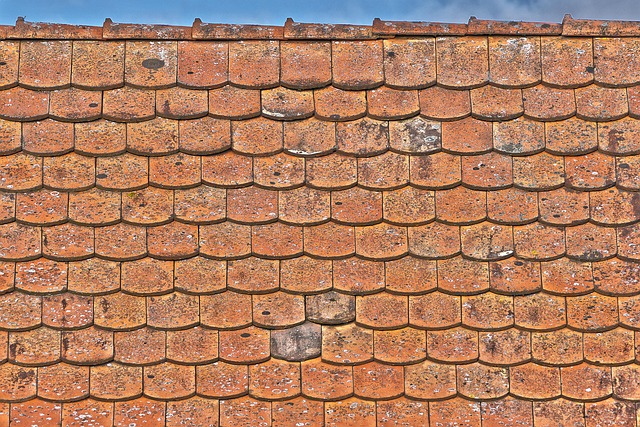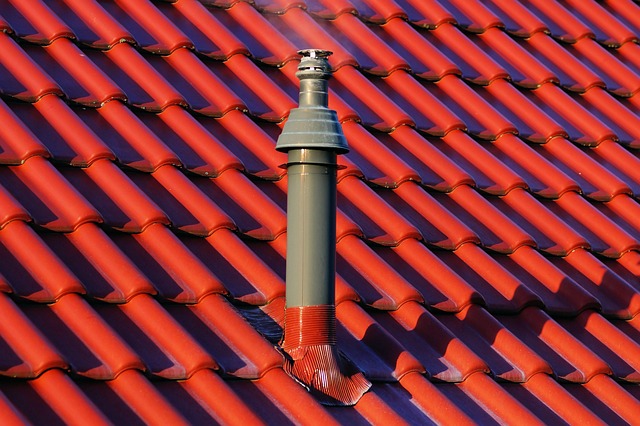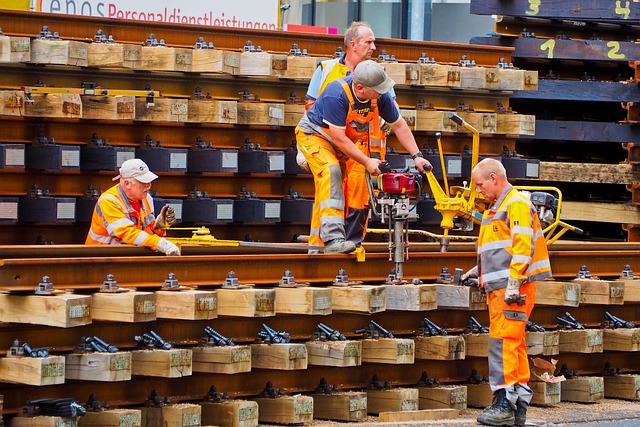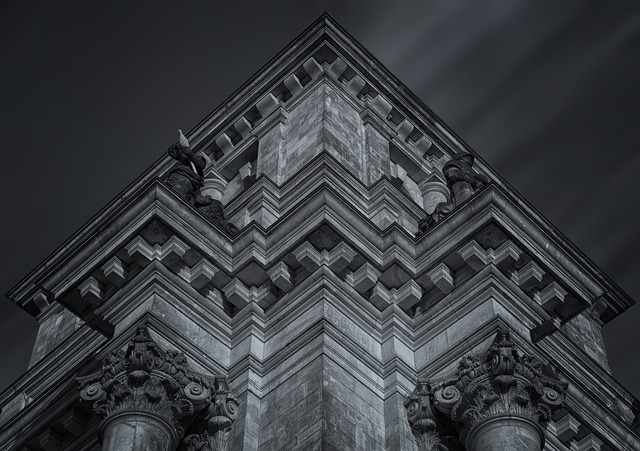Commercial roofs require regular attention for structural integrity and energy efficiency. Regular inspections are crucial to identify damage like missing shingles, leaks, or blisters. Replacing a roof becomes essential for building stability and safety when issues spread. Professional Roof Replacement Services offer durable solutions, from removal of old materials to sealing and insulation. Choosing the right roofing material is vital based on climate, budget, and structural needs. The process involves inspection, removal, surface prep, installation of underlayment, insulation, and new weather-resistant materials. Challenges in historic buildings require specialized materials and techniques for seamless integration. Cost considerations, obtained through quotes from reputable contractors, ensure informed decisions with long-term savings. Post-replacement maintenance includes regular inspections and proper drainage. Safety is paramount, adhering to regulations on fall prevention, material disposal, noise control, building codes, energy efficiency, and fire safety. Strategic decisions lead to longer roof lifespans, reduced costs, and increased property value.
“In the world of commercial property management, a robust roof is an often-overlooked yet crucial asset. Understanding when and why to invest in Commercial Roof Replacement services is key to ensuring your building’s longevity and tenant satisfaction. This comprehensive guide navigates the essentials of roof replacement, from identifying wear and tear indicators to selecting durable materials.
Explore our detailed breakdown, including the step-by-step process, potential challenges, cost factors, safety regulations, and real-world success stories, to make informed decisions regarding Roof Replacement Services.”
Understanding Commercial Roof Replacement: Why It's Necessary

Commercial roofs are designed to withstand the elements and support the structural integrity of buildings, but over time, they can deteriorate due to exposure to harsh weather conditions, UV rays, and various environmental factors. Understanding when it’s time for a roof replacement is crucial for maintaining a safe and efficient workspace. Regular maintenance checks can help identify signs of damage or wear and tear, such as missing shingles, leaks, or blisters under the surface.
A commercial roof replacement becomes necessary when these issues become pervasive, compromising the building’s overall stability and energy efficiency. By investing in professional roof replacement services, businesses can ensure a durable, long-lasting solution that protects their assets and reduces potential downtime. This process involves removing the old roofing material, preparing the surface, installing new materials, and sealing the roof to prevent water intrusion and optimize insulation.
The Signs That Indicate a Need for Roof Replacement Services

Many homeowners often overlook the signs that their roof needs replacement, assuming it will last forever. However, a commercial roof is subject to various elements that can accelerate its deterioration. The most evident sign is visible damage such as missing or damaged shingles, leaks, or significant stains on the interior ceilings or walls. These could indicate weakened areas in the roof structure.
Another crucial factor is the age of your roof. As roofs age, they lose their protective layers, becoming more susceptible to weather conditions. If your commercial building was constructed over a decade ago, it might be time for a thorough inspection by Roof Replacement Services professionals. They can assess the overall condition and provide expert advice on whether a complete replacement or repairs are necessary.
Choosing the Right Commercial Roofing Material for Your Property

When considering a roof replacement for your commercial property, selecting the right roofing material is paramount. The ideal choice depends on various factors such as climate, budget, and structural requirements. For instance, in regions with frequent snowfall, a durable, snow-resistant material like metal or modified bitumen may be preferable. On the other hand, if energy efficiency is a priority, reflective membranes can significantly reduce heating and cooling costs.
Roof replacement services offer a range of options to cater to these needs. Metal roofing, for example, is known for its longevity and low maintenance, while EPDM (ethylene propylene diene monomer) rubber membranes provide excellent flexibility and resistance to extreme temperatures. Consulting with professionals in roof replacement services can help guide your decision, ensuring the chosen material aligns with both your property’s unique needs and industry best practices.
Steps Involved in Commercial Roof Replacement Process

The commercial roof replacement process involves several crucial steps, ensuring a seamless and effective transition for your business. It begins with an extensive inspection to assess the current state of the roof, identifying any damage or areas requiring immediate attention. This initial phase is vital in determining the scope of work and choosing the most suitable materials for the new roof. Once approved, the old roofing system is carefully removed, layer by layer, taking care not to disturb the building’s structural integrity.
After demounting, the surface is prepared, which may include cleaning, repairing, or replacing damaged components. This preparation sets the stage for installing the new roof, where skilled professionals lay down underlayment and insulation, creating a protective barrier. The selection of roofing materials—such as membranes, shingles, or metal sheets—is then made, considering factors like durability, weather resistance, and long-term cost-effectiveness. Finally, the chosen materials are meticulously installed, sealed, and tested to guarantee a watertight seal, protecting the building’s interior from potential leaks.
Common Challenges and Solutions During Roof Replacement

Roof replacement services come with their fair share of challenges, but professional contractors are well-equipped to navigate them. One common issue is the difficulty in matching the new roof’s appearance and texture with the existing structure, especially in historic or architecturally significant buildings. To overcome this, contractors utilize specialized materials and techniques tailored to the specific style, ensuring a seamless blend with the rest of the building.
Another challenge lies in managing the logistical aspects during the replacement process. This includes coordinating access, scheduling work around tenant activities (in commercial settings), and minimizing disruption to business operations. Skilled teams employ efficient project management strategies, temporary protective measures, and clear communication to ensure a smooth and timely roof replacement without causing major inconveniences to the building’s occupants or nearby businesses.
Cost Considerations for Commercial Roof Replacement Projects

When considering a commercial roof replacement, cost is a primary factor that business owners and managers must evaluate. The expense can vary greatly depending on several factors, including the size of the roof, the type of materials used, labor rates in your area, and any additional services required like repairs or inspections. It’s crucial to obtain quotes from reputable roofing contractors offering professional roof replacement services to understand the financial commitment involved.
Moreover, long-term savings should be taken into account. High-quality materials and efficient installation methods can significantly reduce maintenance costs over time. Energy-efficient roofing options, for instance, may qualify for tax incentives or rebates, further mitigating the initial investment. Prioritizing roof replacement projects with a clear understanding of cost considerations ensures that businesses make informed decisions that balance current expenses with future savings.
Expert Tips for Maintaining Your Replaced Commercial Roof

After investing in a commercial roof replacement, proper maintenance is key to ensure its longevity and protect your business from costly repairs down the line. Here are some expert tips to keep your new roof in top shape:
Regular inspections are vital. Schedule routine checks at least twice a year to identify any potential issues early on. Look for signs of damage like missing or damaged shingles, leaks, or flashing problems. Addressing these promptly will prevent further complications and extend the life of your roof. Additionally, maintain proper drainage by ensuring gutters and downspouts are clear and functioning correctly, preventing water damage and keeping your roof dry.
Ensuring Safety and Compliance: Regulations for Commercial Roof Replacements

When undertaking a commercial roof replacement, safety is paramount. With large, often elevated work areas, proper procedures and equipment are essential to protect workers and ensure no harm comes to surrounding properties or individuals below. Many regions have strict regulations in place for such projects, focusing on everything from fall prevention and proper disposal of old roofing materials to noise control during construction. Adhering to these guidelines not only keeps everyone safe but also fosters good relations with local communities.
Roof replacement services must also comply with building codes and industry standards specific to commercial structures. These regulations cover a wide range, including material choices, structural integrity, energy efficiency, and fire safety. Staying up-to-date on these requirements ensures not only the longevity of the new roof but also any warranties or insurance claims associated with the project. Compliance is key to avoiding costly delays and potential legal issues down the line.
Case Studies: Successful Commercial Roof Replacement Stories

Roof replacements are a significant investment for any commercial property, but they can also be a transformative process. Case studies from successful roof replacement projects highlight several key aspects that contribute to their success. One common thread is thorough planning and consultation with experienced professionals. By engaging reputable roofing companies offering specialised roof replacement services, businesses can ensure their new roofs meet industry standards and last for years to come.
These case studies also demonstrate the value of choosing materials suited to the specific climate and structural requirements of each building. Whether it’s implementing innovative drainage systems or selecting durable, weather-resistant membranes, these strategic decisions directly impact a roof’s longevity and performance. As these stories illustrate, investing in expert advice and high-quality materials pays dividends in terms of reduced maintenance costs and increased asset value over the long term.
